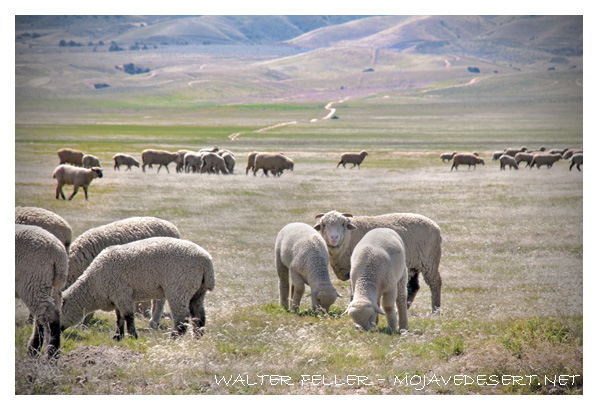Some of the vast fur trade

Some of the vast fur trade in the West used the Old Spanish Trail. American travelers along the Old Spanish Trail, Gila (Arizona) routes, and other land routes to California were involved in the fur trade. Many travelers were trapping for furs as they went. William Wolfskill and others who stayed in California gave up beaver trapping to hunt sea otters, at least for a while, before becoming landowners. Furs could also be traded for horses and mules. Antoine Robidoux built two fur trade forts, Fort Uinta and Fort Uncompaghre, and used the North Branch as a route to supply the forts. The fur trade activity along the Old Spanish Trail was part of a massive whole extending across the western half of the continent.
Sheep and wool trade was a major economic industry in New Mexico. New Mexico weavers provided the woolen goods that were carried over the Old Spanish Trail to California. Wool was also shipped east on the Santa Fe Trail. Many thousands of sheep were traded south along the Camino Real to Chihuahua and Durango during the peak years of 1821-1846. The trade languished during the Mexican-American War, but with the discovery of gold in California and its accompanying population boom, a new market was opened. In 1849, a gold-seeker named Roberts bought 500 sheep in New Mexico for $250, and took them to California through southern Arizona, where he sold them for $8,000. By 1850, rumors of the new market were common in Santa Fe. William Angney bought 6,000 sheep in 1850 and took them to California via the Old Spanish Trail. In 1852, Richens Lacy “Uncle Dick” Wootton took 9,000 sheep along the North Branch of the Old Spanish Trail, on to Salt Lake City, and then west to Sacramento along a California Trail route.
Old Spanish Trail traders also became involved in the ongoing trade in American Indian slaves. Stronger tribes would raid weaker tribes and take captives for sale to the Spanish, and later Mexicans. The Southern Paiutes were the principal victims of the slave trade, which, early in the nineteenth century, is presumed to have used the eastern segments of the later Old Spanish Trail in New Mexico and Utah. Southern Paiutes may have been slaves in Santa Fe and surrounding communities as early as the late 1700s, and the practice continued as late as the 1860s in some parts of Colorado and Utah.
This trade was illegal, hence written accounts were seldom kept and official records are largely lacking. There is limited documentation of the extent of the involvement of Old Spanish Trail trade caravans with the slave trade. The main market for slaves was New Mexico, and a number of travelers into the Utah country reported on Mexicans engaged in slave trading. Some Indian slaves were taken to California to be sold.
Previous - Next
About the Old Spanish Trail
American Indian groups
Spanish colonial interest
In late summer of 1826
A major variation of the Old Spanish Trail
The major reason for travel
There was considerable legal trade
Some of the vast fur trade
Hispanic New Mexican families
Americans and other foreigners
With the American takeover of California
Over the years a number of military groups
Overall, use of the Old Spanish Trail
